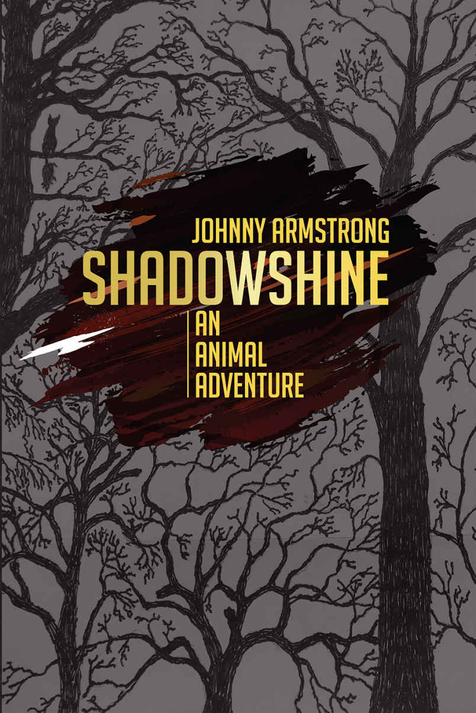
A timely and fearless tale of courage in the face of insurmountable odds, Shadowshine: An Animal Adventure by Johnny Armstrong is a brilliant piece of creative fiction.
When Zak the “poet possum” realizes that his home and those he cares for are being threatened, he embarks on an epic journey into the unknown to rally support and find a way to protect the forest. Somehow, he must unite the Forest Folk to push back the dangerous humans and their allies, but there are secret suspicions and old enemies who stand in his way.
An incredibly intelligent and philosophical protagonist, Zak elevates the intellectual quality of every scene, enabling this novel to touch on deeper themes of logic and morality, purpose, resilience, disappointment and faith. The plot moves along at a healthy pace, but the story is never rushed, nor does the dialogue every feel forced. There are exciting battles and narrow escapes, sinister treachery and heartbreaking betrayal, all aided by lyrical writing and a clear mastery of language.
From sassy she-lynxes and furtive marsupials to the denizens of the Shadow World and noble dire wolves, this book is overflowing with colorful creatures and surprising twists. The unique personality quirks and language patterns of different animal species are creative and engaging, while the underlying plot is inspiring and well-executed. Armstrong deftly juggles a large cast of eccentric characters, each of whom plays a critical part in the story, rather than existing solely as narrative or comedic filler.
Anthropomorphized characters are hardly a new concept, with classics like Watership Down and Animal Farm holding up for generations, largely due to the issues each book allegorically addressed. Similarly, Shadowshine takes clear aim at the incredible damage done to the environment by human society. Despite being set in prehistoric times, Mungo and the destructive, fire-setting humans are not all that different from the selfish, short-sighted environmental profiteers of today. For socially minded parents and young children, early exposure to ideas of conservation and preservation are important, and Armstrong wraps this critical guidance in an entertaining and riveting read.
There are some problematic issues in terms of the language throughout the novel; sometimes it is quite basic, seemingly targeted at younger readers, but other passages are far more complex, with higher-level language, vocabulary, and sentence structure. Also, given that this book is set in the past, some of the ideas presented and expounded upon are inappropriate, such as divergent branches on the evolutionary tree, a concept that wouldn’t be established for thousands of years. Other subtle anachronistic allusions, references, and idioms stand out and briefly break the illusion of the story.
Though it can be difficult to identify the target audience of this occasionally high-brow, allegory-heavy read, the story makes for a captivating escape with a strong message. In the spirit of so many great animal adventure authors, from Brian Jacques to Kenneth Grahame, this uplifting novel is ambitious, original, and highly relevant for readers today.
Book Links
STAR RATING
Design
Content
Editing
Get an Editorial Review | Get Amazon Sales & Reviews | Get Edited | Get Beta Readers | Enter the SPR Book Awards | Other Marketing Services























Leave A Comment